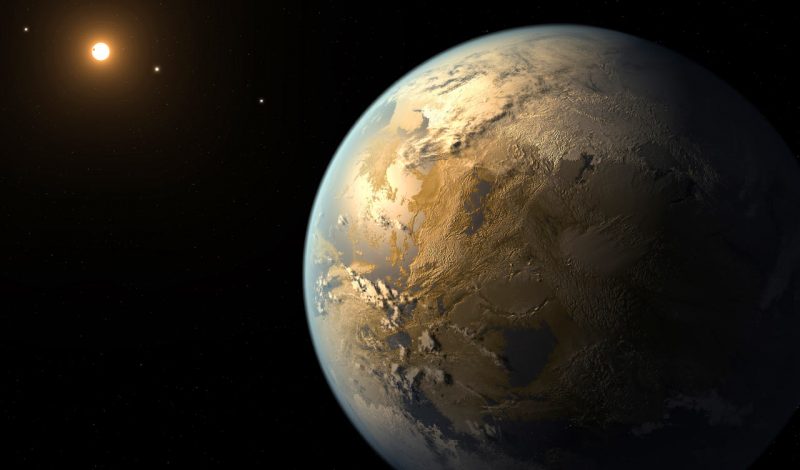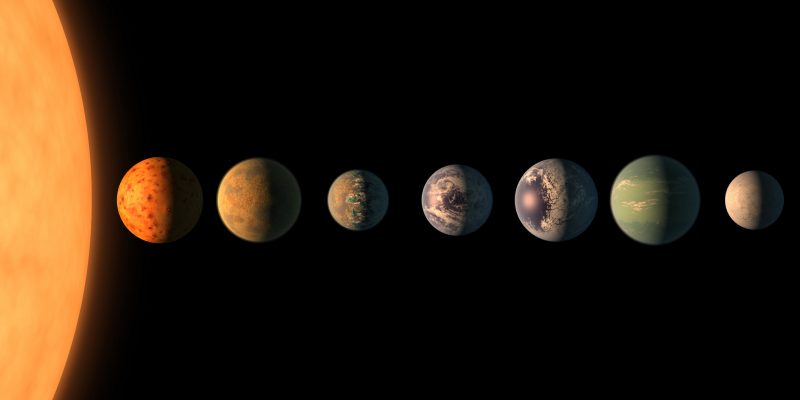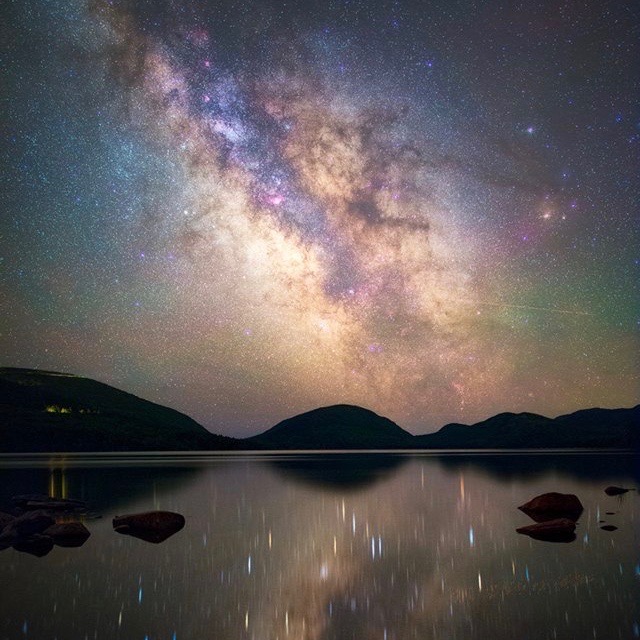
How many Earth-sized planets – orbiting in their star’s habitable zone, where liquid water could exist – are out there in our Milky Way galaxy? Scientists have been discovering exoplanets by the thousands in recent years, and now they have a better idea of what the answer to that question is. According to a new study from Penn State University based on data from the Kepler Space Telescope, it turns out that one in four sunlike stars should have at least one planet similar in size to Earth and orbiting in its star’s habitable zone.
The new peer-reviewed paper describing the results was published in The Astronomical Journal on August 14, 2019.
Clearly, this is an exciting study! It has direct implications for the possibility of life on other worlds. There are about 200 billion stars altogether in our galaxy, and about 10 percent of those are sunlike stars. That’s 20 billion sunlike stars, and if a quarter of them have at least one of these Earth-sized planets, that’s 5 billion in our galaxy alone!

More specifically, the researchers estimated that planets almost the same size as Earth, from 3/4 to 1 1/2 times Earth’s diameter, and with orbital periods ranging from 237 to 500 days, occur around approximately one in four sun-like stars. To account for uncertainties, they recommend that future planet-finding missions plan for an occurrence rate ranging from as low as about one planet for every 33 stars, to as high as nearly one planet for every two stars. According to Eric B. Ford, professor of astronomy and astrophysics at Penn State:
Knowing how often we should expect to find planets of a given size and orbital period is extremely helpful for optimizing surveys for exoplanets and the design of upcoming space missions to maximize their chance of success. Penn State is a leader in bringing state-of-the-art statistical and computational methods to the analysis of astronomical observations to address these sorts of questions. Our Institute for CyberScience (ICS) and Center for Astrostatistics (CASt) provide infrastructure and support that makes these types of projects possible.
Most of the Earth-sized planets actually found so far have been discovered by the Kepler Space Telescope. But they can be difficult to find, as Ford explained:
Kepler discovered planets with a wide variety of sizes, compositions and orbits. We want to use those discoveries to improve our understanding of planet formation and to plan future missions to search for planets that might be habitable. However, simply counting exoplanets of a given size or orbital distance is misleading, since it’s much harder to find small planets far from their star than to find large planets close to their star.

So how did the researchers use the Kepler data to determine how many Earth-sized, potentially habitable planets there likely are?
They designed a new method to infer the occurrence rate of planets across a wide range of sizes and orbital distances, not just the planets that are the main focus of the study. The new model simulates “universes” of stars and planets and then “observes” these simulated universes to determine how many of the planets would have been discovered by Kepler in each “universe.” As Danley Hsu, a graduate student at Penn State, further explained:
We used the final catalog of planets identified by Kepler and improved star properties from the European Space Agency’s Gaia spacecraft to build our simulations. By comparing the results to the planets cataloged by Kepler, we characterized the rate of planets per star and how that depends on planet size and orbital distance. Our novel approach allowed the team to account for several effects that have not been included in previous studies.
While most of the stars that Kepler observed are typically thousands of light years away from the sun, Kepler observed a large enough sample of stars that we can perform a rigorous statistical analysis to estimate the rate of Earth-size planets in the habitable zone of nearby sun-like stars.

The findings of this study can now be used to help plan for upcoming space telescopes, such as the James Webb Space Telescope (JWST), that will be able to study the atmospheres of some of these worlds and search for signs of biomarkers – gases like oxygen or methane – that could indicate life. According to Ford:
Scientists are particularly interested in searching for biomarkers – molecules indicative of life – in the atmospheres of roughly Earth-size planets that orbit in the ‘habitable-zone’ of sun-like stars. The habitable zone is a range of orbital distances at which the planets could support liquid water on their surfaces. Searching for evidence of life on Earth-size planets in the habitable zone of sun-like stars will require a large new space mission.
Not that long ago, we didn’t know if any other stars had planets orbiting them. Now we’ve learned that most of them do, and when it comes to stars similar to our own sun, at least a quarter of them have worlds that could be similar to our own …
Bottom line: A new study using data from the Kepler Space Telescope suggests there might be a large number of Earth-sized worlds in our galaxy orbiting in their star’s habitable zone. Our galaxy, the Milky Way, has about 200 billion stars altogether and about 20 billion sunlike stars. If one in four sunlike stars has at least one Earth-sized planet, that’s 5 billion such worlds in our galaxy alone!











